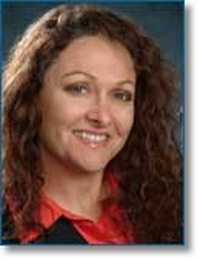Class C: One Man’s Story
14 years, 9 months ago
Insightful consumer research presented at the IPRA World Congress in Peru was brought to life for Deborah Charnes when she met a young man from Lima who personified many of the findings and impressed the author with his motivation, initiative and the hard
In Mexico and Latin America, where class distinctions traditionally are very marked, demographics are segmented by socio-economic status. Class A and B are the top tiers, representing the most affluent.
Mexico’s association for market research, AMAI, describes Class A/B households as those that live in six-bedroom homes in exclusive neighborhoods with round-the-clock armed security guards. The head of household has a doctorate or master’s degree and children attend private schools with tuition of $10,000 or more each year.
These families typically have an exclusive country club membership, and they also own a vacation home or condo abroad.
Class C is a big jump down and therefore accounts for a significant piece of the human pie. This population has until recently been largely ignored by marketers as working poor consumers not worthy of advertising dollars.
Evolution of a class
At the 2010 International Public Relations World Congress held in Lima in June, Laura Schoen, chair, Latin America,Weber Shandwick, a major PR multi-national, spoke to attendees about the evolution of Class C since the 1980s. She cited a multi-year McCann Latin American Emerging Consumer Study.
There are more than 200 million people that fit in the Class C sector, Schoen explained, making this population the third largest economy in the world. Spurred by a solid economic spurt in many of the countries in this region, a significant percentage of Class C families now own cell phones, homes and cars even though the average household income is $500-800 per month.
Their parents were likely raised in poverty and never able to receive an education. This generation, however, is hungry for upward mobility. They use credit cards wisely. "They are natural born fighters," said the speaker, and achievements are very important to them and their families.
Nelson’s story
Nelson was at the three-day conference. He was the picture of professionalism. Dressed in handsome suits each day, a smooth networker, he was able to make friends with seasoned professionals from other countries. After a few pisco sours, he talked about his personal challenges and dreams.
Nelson acknowledged his family fit between Class C and Class D. He was committed to move up the ladder. His mother sold her jewelry and other items to pay for his first year at a private university. Public institutions don’t look good on a resume, are sub-par, and have staff on strike every year, delaying the students’ progress, he explained.
After Nelson’s first year at the university he had to drop out to work and save money. He returned, with a partial scholarship, hoping to complete his degree by age 30.
When he learned an international PR conference was taking place in his hometown, he felt it was an invaluable learning opportunity and stepping stone. However, the price of student registration was $800, which he equated to his annual food expenditures. He spoke to his older brother who had left Peru to work in Spain. Although there are still challenges for South Americans living in Spain, the older sibling agreed the cost of the conference registration would benefit him in the long run. Thus, Nelson received the registration money from Spain.
Rags to riches?
While this may sound like the start of a rags to riches story, the moral won’t be told for many more years. What we do know is that 3,000 Peruvians receive a degree in the field of communications each year, and only a small percentage finds work in the field. The dean of one of the leading universities school for communications affirms that in the last 16 years, the number of students choosing public relations as a field of study has increased 200 percent.
This is a common story in Latin America. The new thread may be that more and more people from historically disadvantaged households are getting a quality education. There is enlightenment among the lower middle class, but the light at the end of the tunnel may flicker out.
There is a great struggle among the Class C Latin Americans to emerge as a strong middle class. The quest for advancement, however, often leads them out of their comfort zone to Europe or the United States. Few Latin Americans from the Class C segment want to leave, but with their improved educational status they are more aware of opportunities beyond their borders, and we are now living in a global economy.

The Author
Deborah Charnes Vallejo
Deborah Charnes Vallejo has been vice president, public relations at Bromley Communications since 1998
mail the authorvisit the author's website
Forward, Post, Comment | #IpraITL
We are keen for our IPRA Thought Leadership essays to stimulate debate. With that objective in mind, we encourage readers to participate in and facilitate discussion. Please forward essay links to your industry contacts, post them to blogs, websites and social networking sites and above all give us your feedback via forums such as IPRA’s LinkedIn group. A new ITL essay is published on the IPRA website every week. Prospective ITL essay contributors should send a short synopsis to IPRA head of editorial content Rob Gray emailShare on Twitter Share on Facebook

